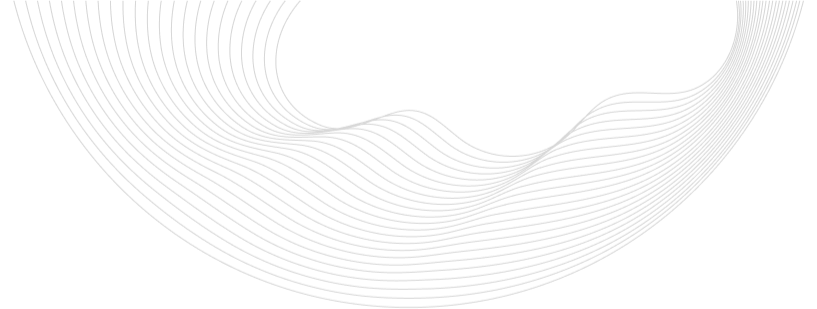Ballast Regulator
Our Ballast Regulator efficiently shapes and distributes track ballast, ensuring optimal track stability and performance. Designed for versatility, it adapts to various railway maintenance tasks with precision and reliability.
OVERVIEW
The ballast regulator is a versatile machine designed to distribute and shape the aggregate and ballast around the track. They significantly enhance the stability of tracks, ensuring their safety and high performance. We provide robust and super-efficient ballast regulators used to meet the demands of modern railway maintenance and construction projects.
Ador’s ballast regulators are engineered in full compliance with the UNI EN 14033 standards and offer seamless integration into train systems. They are multi-purpose railway machines adapted to be incorporated into a train or used as a towing locomotive. Our most efficient ballast regulators also provide a high production capacity and high performance, and they are equipped with hydraulic dust suppression systems that make them eco-friendly.
We present two types of ballast regulators, CP250 and CP500. Both efficiently feature a solid frame with two axes on which all critical components—working bodies, engine compartments, tanks, the cockpit, six independent hydraulic circuits, and all parts of the machines—are connected. Additionally, their maximum width of under 3 meters (9.84 ft.) and 34 tons of weight allow easy transportation without needing special vehicles.


ModelS

CP250

CP500
Technical SPECIFICATIONS
Our ballast regulators are engineered to meet the specific needs of our clients, offering customizable features and configurations.
Listed below are the general technical specifications of our ballast regulators. For the complete specifications in details, please download the catalog at the bottom of the page.
| Engine: 160 kW (215 HP) @ 2300 rpm to 360 kW (483 HP) @ 2100 rpm |
| Weight: 34 ton (75220 lbs.) to 36 ton (79370 lbs.) |
| Wheelbase: 6,200 mm (20.3 ft.) |
| Total Length: 13,365 mm (43.8 ft.) |
| Max Speed: 60 km/h (37.3mph) |


Gallery












Catalog
Related Products

Shunter
Last generation components

Road Rail Loader
power and control

Hi-Rail Truck
large loads and high speeds

Sleeper Gantry
Speed up cycle times

Rails Loader Crane
loading and unloading the rails

Track Laying Gantry
Quick and safe

Motorized Trolley
Totally radio controlled
FAQS
Can it be customized?
Yes. The ballast regulator is engineered with configurable features to meet specific client requirements and varied track maintenance tasks.
What are its key technical specifications?
For detailed technical specifications—including performance metrics, dimensions, and customizable features—please download our catalog.
How can I get more information?
Contact us for detailed technical documentation or tailored solutions to suit your project needs.
What is the scope of your work?
Our scope of work encompasses Canada and extends globally, offering tailored solutions for infrastructural and industrial needs.
What Are Ballast Regulators?
A ballast regulator is a type of railway maintenance equipment widely used to distribute aggregate, gravel, and ballast around the track. This shaping and distribution can directly impact the enhancement of trains’ ride quality and support the ties in rail tracks. Therefore, ballast regulators play a crucial role in railway maintenance and prevent rails from shifting out of alignment.
They are typically used along with ballast tampers, another efficient railway maintenance machine used to tamp the ballast under railway tracks to make them more durable. As versatile maintenance equipment, the ballast regulator is also designed to plow snow, clear vegetation, sweep tracks, and dig ditches. This is why you may have heard that ballast regulators are called ballast sweepers, too.
The Applications for Ballast Profiling Machine
Ballast regulators are versatile railway maintenance machines primarily used to regulate the ballast around the railway tracks. However, it operates in various ways that are as follows:
- Distribute the ballast and aggregate, ensuring the stability and proper alignment of railway tracks.
- Transfer ballast from the center to both sides or one side only.
- Transfer the ballast from one side to the center or the other side.
- Transfer the ballast from both sides to the center.
- Sweeping the sleepers, cribs, and fasteners (after ballast regulation using brooms).
- Pick up the surplus ballast into a hopper (if available) and transport it to another location.
Types of Ballast Distributing Machine
Based on their equipment, ballast distributing machines are typically provided in two main types:
- With hopper: these types of ballast regulators are equipped with a hopper, using brooms to collect and pick up the excess ballast from sleepers into the hopper.
- Without hopper: These machines include shoulder ploughs, front or center ploughs, brooms, and conveyor belts, mostly used to plow snow.
However, due to their versatility and efficiency, ballast regulators are provided with various equipment and systems. For instance, they could include trailers, rotating brushes, Dynamic Torque Control (DTC), and other unique features, making them more efficient than they already are.
Ballast Regulator Attachments
With the aim of enhancing performance, these machines are typically equipped with efficient components. Here, we mention some of the most common ballast regulator attachments in the following:
- Broom: Mounted in the rear or between the bogies, removing ballast from the tracks and the tops of sleepers, filling under-ballasted cribs, and placing extra ballast on the shoulders for final regulation.
- Hopper: Collecting excess ballast that brooms sweep and transport it on the shoulder through chutes.
- Center plough: Placed in the center of the ballast regulator and between bogies or wheels, regulating and distributing ballast between rails.
- Shoulder plough: Equipped to the side of the machine, regulating and distributing shoulder ballast from inside to outside or reverse.
- Front plough: Attached between the rails in front of the ballast regulator, usually used to plough in, plough out, or transfer ballast to either side or forward and backward.
These are more efficient and common components typically attached to a ballast distributing machine, making it more versatile. However, they can be equipped with some other special components to be customized based on various projects.

